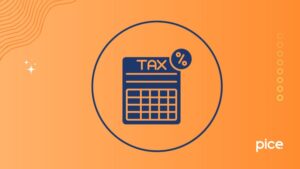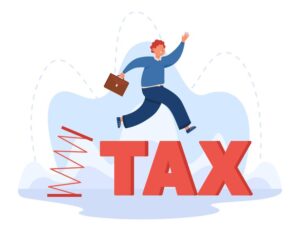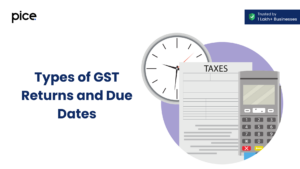What is the Meaning of B2C Large Invoices in GST?
- 17 Aug 24
- 15 mins
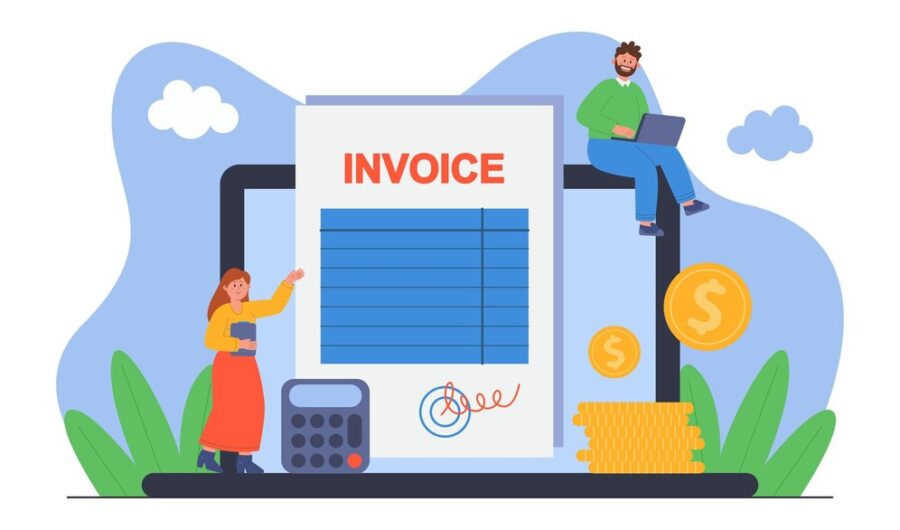
What is the Meaning of B2C Large Invoices in GST?
- Types of GST Invoices
- What are B2B GST invoices (business-to-business invoices)?
- What is a B2CL GST invoice (business-to-consumer large)?
- What is a B2CS GST invoice (business-to-consumer, small)?
- Difference Between B2C and B2B
- e-Invoicing and B2C Transactions
- QR Code for B2C Invoices
- Types of Invoices
- Conclusion
Key Takeaways
- B2B GST invoices are crucial for facilitating input tax credits between businesses.
- B2CL GST invoices are required for inter-state sales exceeding INR 2.5 lakhs.
- QR codes on B2C invoices ensure transparency and easy verification of transaction details.
- B2CS invoices are intended for intra-state sales of small value and are not suitable for interstate transactions.
- E-invoicing in B2C enhances the efficiency of transaction reporting and reduces discrepancies.
Goods and Services Tax (GST) has transformed the taxation landscape in India, simplifying the structure and making it crucial for businesses to understand various types of invoices associated with it. This article explains into the intricacies of GST invoices, exploring the different types and explaining their specific uses and regulations.

Types of GST Invoices
GST invoices are crucial records that businesses issue when supplying goods or services. They serve as proof of sale and are vital for tax calculation purposes.
What are B2B GST invoices (business-to-business invoices)?
B2B GST Invoices, or business-to-business invoices, are used when goods or services are sold from one registered business to another. These invoices are critical for the proper documentation and management of input tax credits within the GST framework.
Key Features of B2B Invoices:
- GSTIN Details: Both the supplier and the recipient must have their GST Identification Numbers (GSTIN) listed on the invoice. This is crucial, as it allows both parties to claim input tax credits.
- Detailed Information: The invoice must include comprehensive details such as the date of issue, a unique serial number, the supplier’s and buyer’s address, description of goods or services, quantity, total value, tax rate applied, and the tax amount in terms of CGST, SGST, IGST, and UTGST as applicable.
- Tax Breakdown: It should clearly break down the taxes applied. In India’s dual GST model, this could mean displaying separate amounts for Central GST (CGST) and State GST (SGST) for intra-state supplies, or Integrated GST (IGST) for inter-state supplies.
- Place of Supply: For inter-state transactions, the place of supply along with the state code is important as it affects the type of tax applied (CGST + SGST or IGST).
Importance of B2B GST Invoices:
- Input Tax Credit: These invoices are vital for businesses to claim input tax credit, which is the credit manufacturers receive for paying input taxes towards inputs used. To claim this credit, documentation through B2B invoices is required to prove that tax was indeed paid at the purchase level.
- Compliance and Verification: Maintaining proper B2B invoices helps businesses comply with GST regulations and facilitates easier verification and audits by tax authorities.
- Financial Documentation: They serve as a crucial part of financial documentation and record-keeping for businesses, enabling better financial management and accountability.
B2B invoices not only ensure transparency and accountability in business transactions but also play a pivotal role in the seamless functioning of the GST system by enabling the proper flow and utilization of input tax credits across the supply chain.
What is a B2CL GST invoice (business-to-consumer large)?
The B2CL GST Invoice (Business to Consumer, Large) is used for inter-state transactions where goods are sold from a business to a consumer and the transaction value exceeds a certain threshold—currently set at INR 2.5 lakhs. This type of invoice is crucial for ensuring compliance with GST regulations, especially for large transactions that cross state lines.
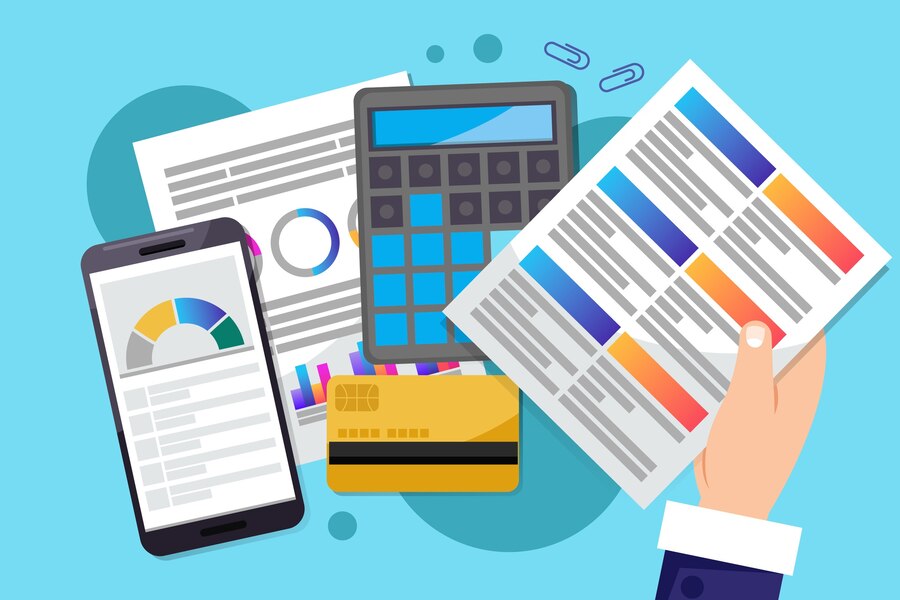
Key Features of B2CL GST Invoices
- High Transaction Threshold: B2CL invoices are used specifically for high-value transactions. This threshold is intended to segregate smaller everyday consumer transactions from significant ones that require more detailed scrutiny by tax authorities.
- Inter-State Sales: These invoices are issued for sales where the supplier and consumer are located in different states. The IGST (Integrated GST) is the applicable tax on these transactions, which the central government fully levies but shares with the states.
Essential Details Included in B2CL Invoices:
- Seller’s and Buyer's Details: Includes the name and address of the supplier. Unlike B2B invoices, the GSTIN of the buyer is not required unless the buyer is registered under GST.
- Invoice Date and Number: A unique invoice number and the date when the invoice is issued.
- HSN Code/SAC: The Harmonized System of Nomenclature code for goods or the Service Accounting Code for services.
- Description of Goods/Services: Detailed description of the items or services being sold.
- Quantity and Unit: The quantity of the goods and the unit measure.
- Total Value: The taxable value fields of the transaction, including breakdowns of the tax amount, show the IGST applied.
- Place of Supply: Important for determining the applicable tax jurisdiction, especially in inter-state transactions.
Purpose and Importance
- Tax Compliance: Ensures that GST is appropriately applied and reported for large-value transactions across state lines. This is crucial for the correct allocation of tax revenue between states and the central government.
- Record-keeping and Transparency: This helps in maintaining accurate sales records for businesses and provides transparency in transactions for consumers, ensuring that all parties are clear about the tax charges.
Compliance and Reporting
- GST Returns: Details from B2CL invoices must be reported in the regular GST returns under specific sections meant for inter-state sales to unregistered persons. This helps in proper tax accounting and reconciliation.
- Audit and Verification: These invoices facilitate easier audit and verification processes by tax authorities, as high-value transactions are often scrutinized more closely to prevent tax evasion.
The B2CL GST invoice is an integral component of the GST system, ensuring that large inter-state consumer transactions are transparently and efficiently processed under the tax regime. This helps build a streamlined tax infrastructure that supports both tax compliance and business operations across state boundaries.
What is a B2CS GST invoice (business-to-consumer, small)?
The B2CS GST Invoice (Business to Consumer, Small) is specifically designed for transactions that do not exceed a specific monetary threshold and are conducted within the same state. These invoices are streamlined to simplify the process for small businesses and to ensure compliance with GST regulations for smaller transactions. Here’s a detailed breakdown of the key aspects and features of B2CS GST Invoices:
Key Features of B2CS GST Invoices
- Transaction Threshold: B2CS invoices are used for transactions where the annual turnover does not exceed INR 2.5 lakhs. This threshold is critical for determining when a B2CS invoice should be used as opposed to a B2CL invoice, which is used for larger inter-state transactions.
- Simplified Details: Unlike invoices used for B2B or larger B2C transactions (B2CL), the B2CS invoice does not require detailed information about the buyer, such as the GSTIN, because the buyers are unregistered persons under GST.
- Applicability: These invoices are applicable for intra-state sales only, meaning both the seller and the buyer are located in the same state. As a result, the taxes involved are CGST (Central GST) and SGST (State GST), as opposed to IGST (Integrated GST), which is charged in inter-state transactions.
Essential Elements of B2CS Invoices:
Seller’s GSTIN: Mandatory for the seller’s identification.
Date of Issue: The date when the invoice was issued.
Description of Goods and Services: Detailed description of the products or services provided.
Total Amount: The total payable amount, including taxes.
Tax Breakdown: Clear display of CGST and SGST rates and the corresponding amounts.
Purpose and Importance
- Compliance: Ensures compliance with GST regulations for small transactions within a state, simplifying tax reporting and compliance for small businesses.
- Simplification: Reduces the complexity of documentation required for small and frequent transactions, making it easier for businesses to manage their accounting and for consumers to understand their invoices.
- Record-Keeping: Helps in maintaining proper sales records for small businesses, which is essential for periodic GST filings and audits.
Compliance and Reporting
- GST Returns: Sales under B2CS invoices are typically reported under a specific section in the regular GST returns (GSTR-1), where they are summarized, unlike individual transaction reporting required for B2B sales.
- Digital Integration: With the advent of digital tax systems, even B2CS invoices may be integrated into broader e-invoicing systems in the future, enhancing the efficiency and accuracy of tax reporting.
B2CS invoices are integral to the GST framework, providing a structured yet simplified invoicing solution for small-scale transactions and ensuring that all sales, no matter how small, are properly documented and taxed in accordance with the law. This helps broaden the tax base and improve tax compliance across all levels of business transactions.
Difference Between B2C and B2B
| Aspect | B2B Transactions | B2C Transactions |
|---|---|---|
| Customer Type | Transactions between two registered businesses. | Transactions between a business and an individual consumer. |
| Invoicing | Detailed invoices required, including GSTINs of both parties, address, and tax details. | Simpler invoices, GSTIN not required for small transactions, and less detail overall. |
| Tax Credit | Input tax credit is available; taxes paid can be reclaimed. | No input tax credit is available; end consumer bears the tax cost. |
| Compliance | High level of detail and accuracy required for tax filings and compliance. | Simpler compliance and summary-level reporting, especially for smaller sales. |
| Regulatory Scrutiny | High scrutiny to prevent tax evasion and ensure accurate credit claims. | Less about credit verification, more focus on correct tax application. |
| Documentation | Requires strict documentation for audits and record-keeping. | Documentation is less strict but must be accurate for large transactions. |
| Tax Reporting | Detailed transaction reporting is necessary for cross-verification of tax credits. | Generally, it requires only total sales reporting without detailed breakdown. |
e-Invoicing and B2C Transactions
E-invoicing, or electronic invoicing, has become a significant component of the GST framework in India, enhancing the ease and accuracy of tax reporting and compliance. While initially focused on B2B (business-to-business) transactions, the scope of e-invoicing is gradually extending to B2C (business-to-consumer) transactions, particularly those involving larger transaction values or complexities. Here’s a detailed overview of e-invoicing and its implications for B2C transactions:

- Overview and Purpose
E-invoicing refers to the system where invoices are generated through a standardized electronic format directly on a government portal. This allows immediate registration of the invoice by the tax authority for further processing and compliance checks.
Purpose: The primary aim is to curb tax evasion by ensuring that all invoice data is reported real-time to the tax authorities and to streamline the input tax credit system. - Implementation in B2C
Gradual Introduction: As of now, e-invoicing for B2C transactions is primarily focused on high-value transactions and is being tested in phases. For most consumer transactions, especially those at a retail level, e-invoicing is not yet mandatory.
Future Plans: There are proposals to extend e-invoicing to all B2C transactions irrespective of the value, which would require even small businesses to adapt to this system eventually. - Key Features
QR Codes: A crucial feature in the context of B2C e-invoicing is the use of QR codes on invoices. These codes contain essential details about the sale and can be scanned by consumers to verify the details of their purchase.
Real-time Data Access: E-invoices provide tax authorities with real-time access to transaction data, enhancing their ability to monitor and audit transactions more effectively. - Benefits
For Tax Authorities: Real-time tracking of transactions reduces tax fraud and increases compliance.
For Businesses: Streamlines invoice processing and reduces the risk of errors in tax reporting. It also makes the reconciliation of tax credit faster and more accurate.
For Consumers: Enhances transparency, enabling consumers to verify the authenticity of their purchases and the accuracy of the tax charges applied. - Challenges
Technological Requirements: Small businesses may struggle with the technological and financial requirements of setting up e-invoicing systems.
Consumer Adaptation: Educating consumers on how to use QR codes and verify invoices might require significant effort. - Current State and Future Prospects
Adoption Rate: While adoption in B2C is still limited compared to B2B, the infrastructure for wider implementation is being gradually built by the authorities.
Regulatory Changes: Businesses need to stay updated with regulatory changes and be prepared to implement e-invoicing as it becomes mandatory for more types of B2C transactions.
QR Code for B2C Invoices
For B2C transactions, QR codes provide a quick way for consumers to verify details of the purchase and for businesses to ensure authenticity and compliance with GST regulations.
Types of Invoices
- Regular Invoice
For the majority of transactions involving goods and services, businesses use this type of invoice. It is issued to charge the GST and pass on the input tax credit. A regular GST invoice typically includes details such as the supplier's name and address, the recipient's GSTIN (if registered), place of supply, HSN code (Harmonized System of Nomenclature), tax rates applied, and the taxable value of goods or services provided.
- Bill of Supply
It is used instead of a regular invoice when GST is not applicable on the transaction. This occurs in two cases:
- The supplier is registered under the GST Composition Scheme and cannot charge GST from their customers.
- The goods or services supplied are exempt from GST.
A bill of supply will contain details similar to a regular invoice but will not show the tax amount, as no tax is being charged.
- Tax Invoice
A tax invoice is essential for claiming input tax credit. It must contain specific details like the GSTIN of the supplier and recipient, the invoice number and date, description, quantity, and value of goods or services, the tax rate and tax amount (broken down into CGST, SGST, IGST, and UTGST as applicable), and the place of supply.
- Debit Note and Credit Note
When a tax invoice has been issued and the taxable value or tax charged in the invoice needs to be revised, a debit or credit note is issued.
A debit note is issued when the amount payable to the supplier increases.
A credit note is issued when the amount payable to the supplier decreases, often because of returns or discounts.
- Receipt Voucher
When a payment is received in advance, the supplier must issue a receipt voucher as proof of the payment. This voucher will be used later to offset the amount against the final invoice when it is issued.
- Refund Voucher
If the goods or services are not provided after receiving an advance payment and a receipt voucher has been issued, a refund voucher is issued to nullify the receipt voucher, indicating that the amount received will be returned and not used as a credit against a future supply.
- Export Invoice
GST invoices for export sales are termed export invoices. These are essential for businesses exporting goods or services out of India. Export invoices must contain a declaration that the GST is not applicable and the supply is meant for export.
- E-Invoice
An e-invoice, or electronic invoice, under GST is a standard format invoice that can be read by all GST software systems. It is generated at the GST portal and has a unique Invoice Reference Number (IRN). This type is mandatory for businesses with a turnover exceeding a specific threshold to ensure compliance and reduce tax evasion.
- Delivery Challan
In cases where a tax invoice cannot be issued at the time of removal of goods, a delivery challan is issued instead, for example, in the case of liquid gas supply or transportation of goods for job work.
These invoice types ensure that the GST system is capable of tracking transactions across the vast Indian market, facilitating proper tax collection and compliance, and minimizing tax evasion.
Conclusion
Knowing the different types of GST invoices is essential for businesses to ensure compliance and optimize their tax benefits. Proper invoicing helps with clear financial documentation and ease of tax filing.
💡If you want to pay your GST with a credit cardd, then download Pice Business Payment App. Pice is the one-stop app for paying all your business expenses.
 By
By 








